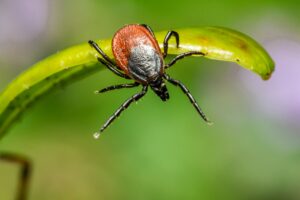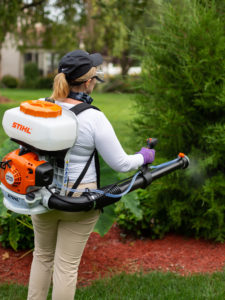The Tick App: a research project to prevent tick-borne diseases
The Tick App was developed as a part of a research study by researchers from Columbia University and the University of Wisconsin – Madison, members of the CDC Regional Centers for Excellence in Vector-Borne diseases. Centers for Disease Control (CDC) is funding for this project. The project is led by distinguished researcher Dr. Pilar Fernandez who focuses on eco-epidemiology of vector transmitted diseases and mathematical modelling and complex systems.
The app is an useful tool for people across the country to help report data that can be used to combat ticks.
What can pest control professionals do to help?
Pest control professionals are outside a lot, and are likely to encounter a lot of ticks.
Consider signing up to help gather data for the project. Results of this research will be more useful if a lot of different people are helping to gather the data.
The focus of the Tick App is on areas which are high transmission for Lyme disease. If you are in an area with a high risk for Lyme disease, your employees can use this app to report ticks. They can also use the app to check in when it asks for a report about their activities and if they see any ticks today. With thousands of people checking in, this information will help to build a database for researches to use for research.
Focus of the study: Lyme disease
Why Lyme disease?
Lyme disease is the most common vector-borne disease in the United States. This disease is transmitted to humans through the bite of infected blacklegged ticks. Typical symptoms include fever, headache, fatigue, and skin rashes. If left untreated, infection can spread to joints, the heart, and the nervous system.
The information gathered via Tick App will help researchers design integrated control strategies to prevent diseases transmitted by ticks. If you live in a high-risk area, sharing your experience and perspective with the study via this user-friendly app will help scientists learn about the risk factors for tick borne disease, thus design better methods that prevent tick bites and tick-borne diseases.
How can you help with the study?
Once you download the Tick App and register for an account, you will be asked to take an enrollment survey. This survey will help capture your baseline risk of exposure to ticks. You will then receive a weekly to monthly message to start your tick diary during the high risk months (May to September).
The tick diary, or activity report, should take less than a minute to complete. It asks if you or a household member encountered a tick and what you did that day. When you start the tick diary, you will receive a daily reminder until you complete 15 reports. Also, you can help by reporting any tick through a quick form built in the app.
CONCLUSION
Consider talking to your team about downloading and using the tick app. The pest control community is on the front lines against vector borne diseases, this is another way we can help protect our communities.







